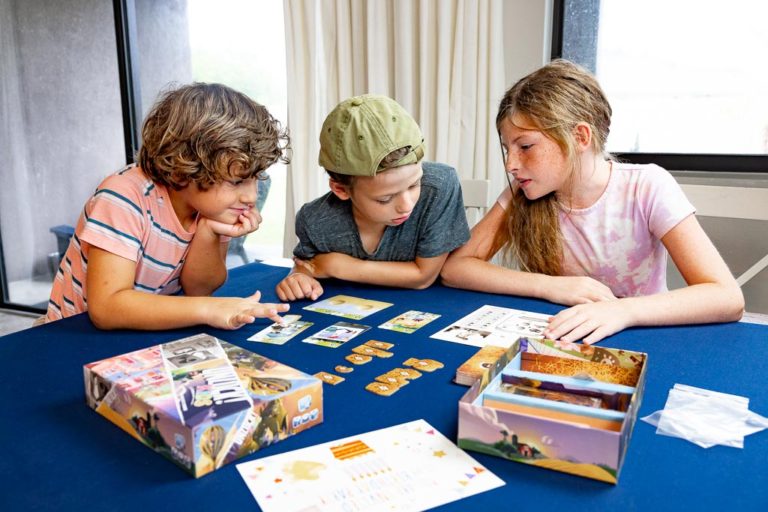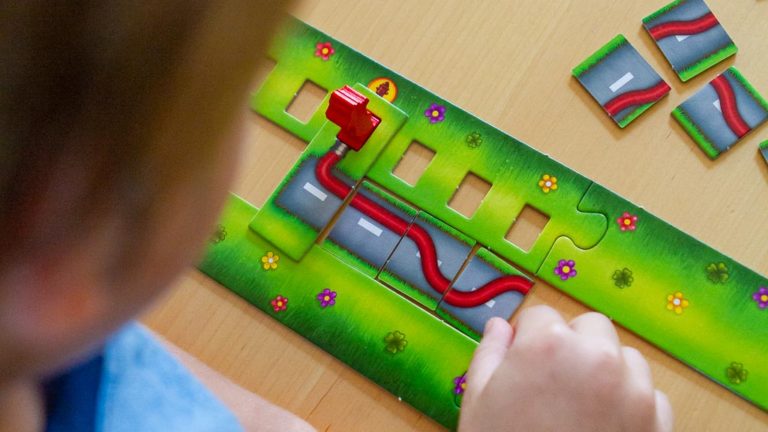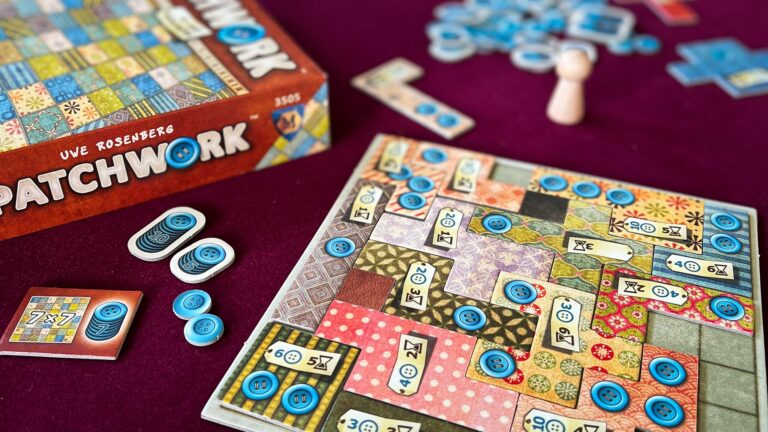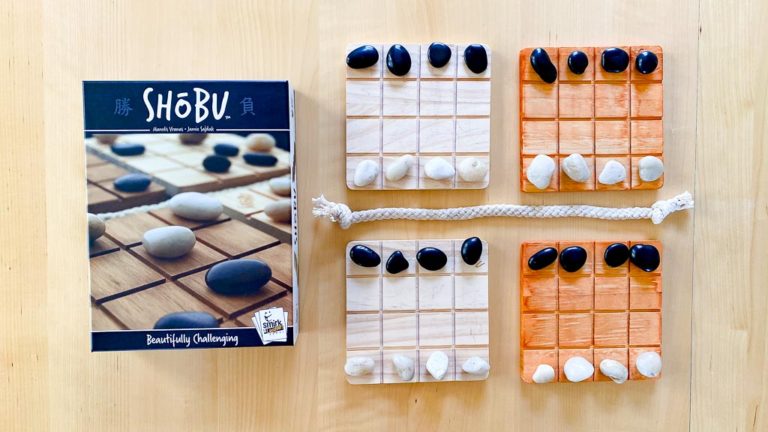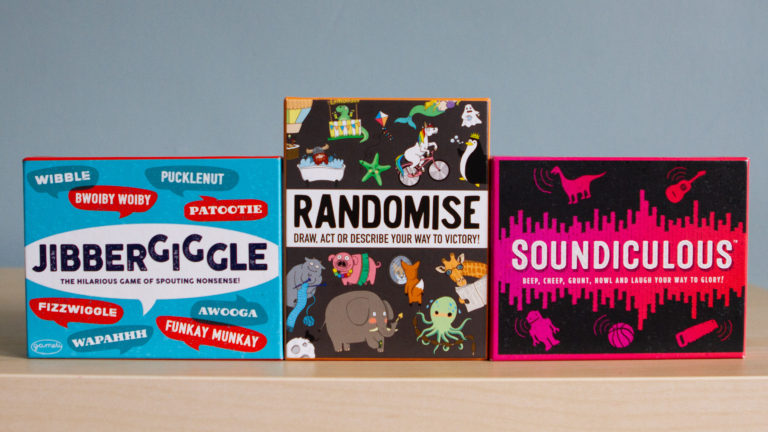Ever wanted to know what it would feel like to hold the world in the palm of your hand?
Well Blue Orange Games is giving everyone the opportunity to try it out in their new planet building tile placement game that is truly a wonder to play and hold.
What is Planet?
Planet is a tile placement game where you work to build a planet that fulfills environment requirements of animals. Each tile is magnetized to allow it to connect with the planet core. Strategically place your continent tiles to meet the habitat needs of animals to gain that animal to your planet. The player with the most points at the end of the game wins.
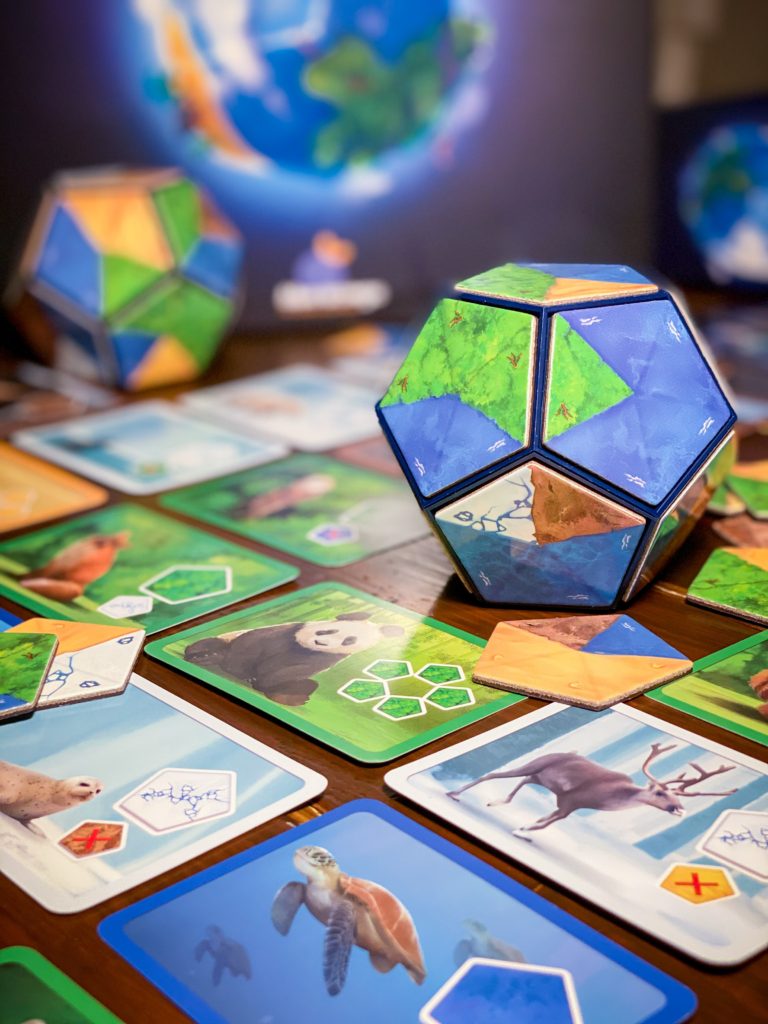
How do you play?
Planet is played out in twelve rounds.
Each player begins with an empty planet core upon which they will place their continent tiles throughout the game.
The continent tiles are shuffled and placed in stacks of five in a line to signify the rounds in the game. The animal cards are shuffled, then 20 are randomly selected and flipped face up along the layout of the tiles as described. Players can see when each animal will be available to win during the rounds, allowing players to plan how they wish to build their planet.
Each player receives a “Natural Habitat” objective card, giving them a specific environment, (forest, ice, desert, ocean,) that will net them points at the end of the game.
Adding Continents
Each round begins with players selecting continent tiles. To begin, players will flip over one of the continent tile stacks. The first player will select one tile to add to their planet. Then the next players do the same in clockwise order.
Players will add their continent tile to any free space on their planet. Players are able to look at the planets of other players.

Origin of Life
Starting in the third round, life begins to flourish on the planets. After drafting the continent tiles, players will check if their Planet meets the conditions required of the animal(s) for that round.
Animals will have one of three types of requirements:
Planet with the most of one type of region
Planet with the biggest region touching a specific habitat
Planet with the biggest region NOT touching a specific habitat.
The player whose Planet has this requirement will take the animal card.
The turn ends once all animal cards for that round have been taken.
Then the next round begins
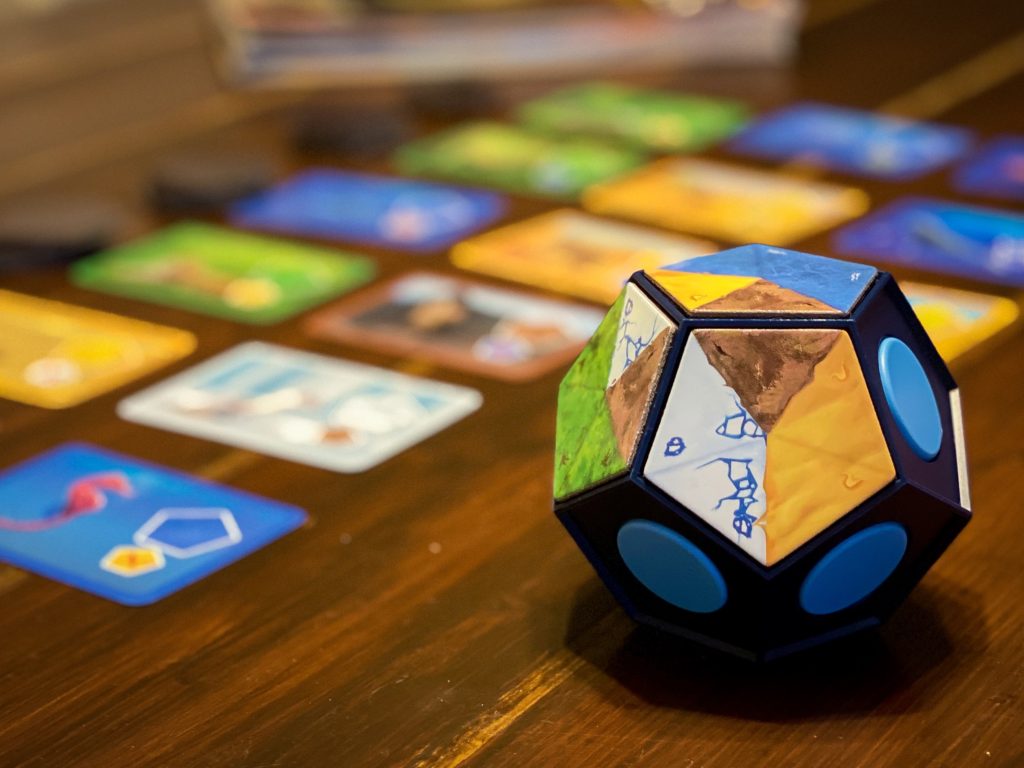
Game End
After the 12th round the game ends. Players will now have a fully covered Planet and can begin end of game scoring.
Secret objectives are revealed. Players check to see if they met their objective to score points.
Then players score animal cards, earning 1 point for each animal whose natural habitat is the same as their objective, and 2 points for each other animal whose habitat does not.
The player with the most points wins the game.
What do we think?
Board games are tactile experiences. There’s something inherently wonderful about picking up pieces, placing them on the board, and watching the game spread, change, and expand throughout play.
Planet takes that tactile experience to a whole new level.
Holding the Planet in your hand, rotating it around, adding to it, creating something new, is incredibly satisfying. I love watching the joy wash over people’s faces when they pick up their planet. It’s instant smiles.
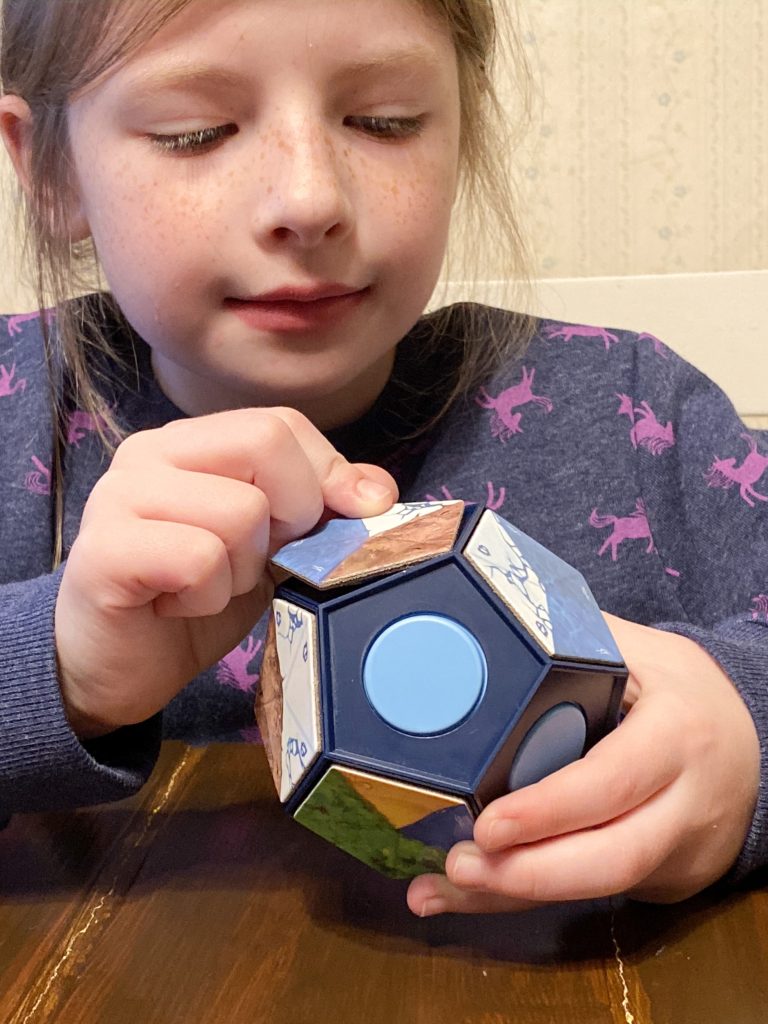
What’s even better is the game is wonderful as well!
I have been a huge fan of Blue Orange Games’ other hit Kingdomino for years. It is an essential tile placement game in my opinion.
Planet takes the spirit of Kingdomino, and really ups the anti with a beautiful theme and a mind bending puzzle.
I love that players are able to see every animal that will be available to earn throughout the game. It allows players to not just think for the current round, but to plan for two, three, four, or more rounds down the line. Each continent tile that you draft requires a lot of thought: does this meet your secret objective? Will this earn you an animal this turn? What about the next turn? Can you place it in such a way that it fulfills a couple habitat requirements?
For such an adorable game, you’ll really need to focus your brain power in order to pull out a win.
One of my favorite things though about any game is when it can be fun even if you lose. Building and creating your planet and then holding the completed work in your hand is so fun that everyone always seems pleased at the end no matter how the scores look.
Planet also plays great at all player counts.
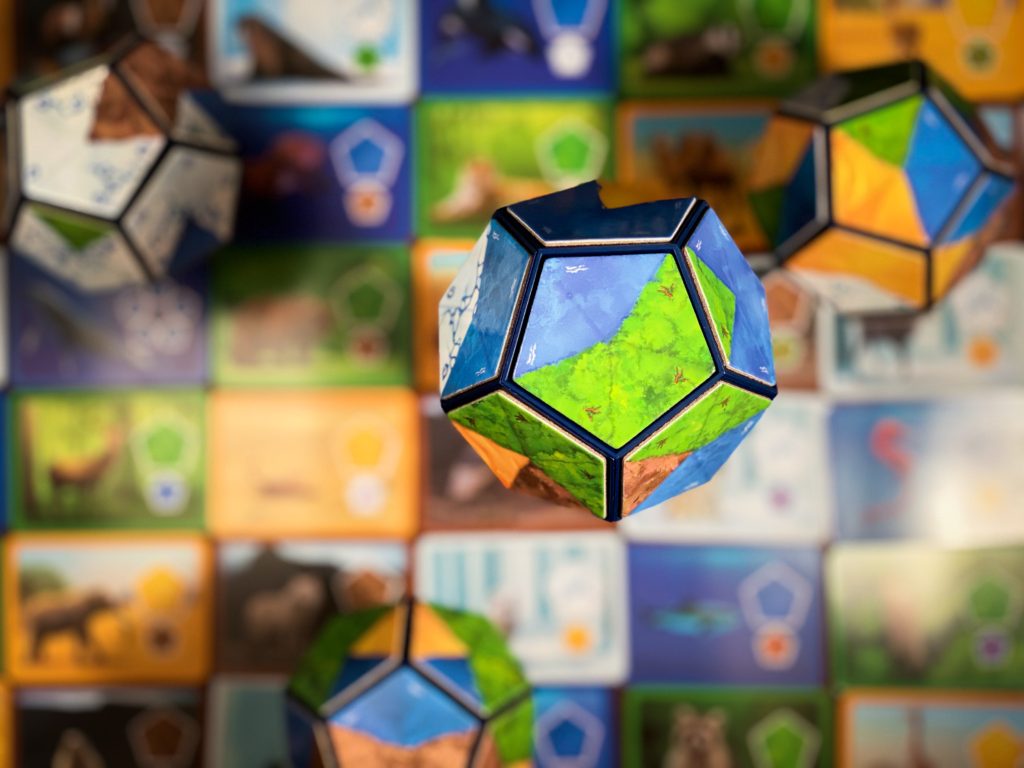
Components:
As typical of Blue Orange Games, the components in Planet are gorgeous.
Everything feels sturdy and high quality, I don’t have any worries of the pieces not lasting.
The magnetic tiles connect to the Planet very well though you’ll want to be careful not to drop the core during play as this will knock the tiles off.
With such unique components, the box insert is especially important. Everything fits nice and snugly into the box for storage so its not rattling around.
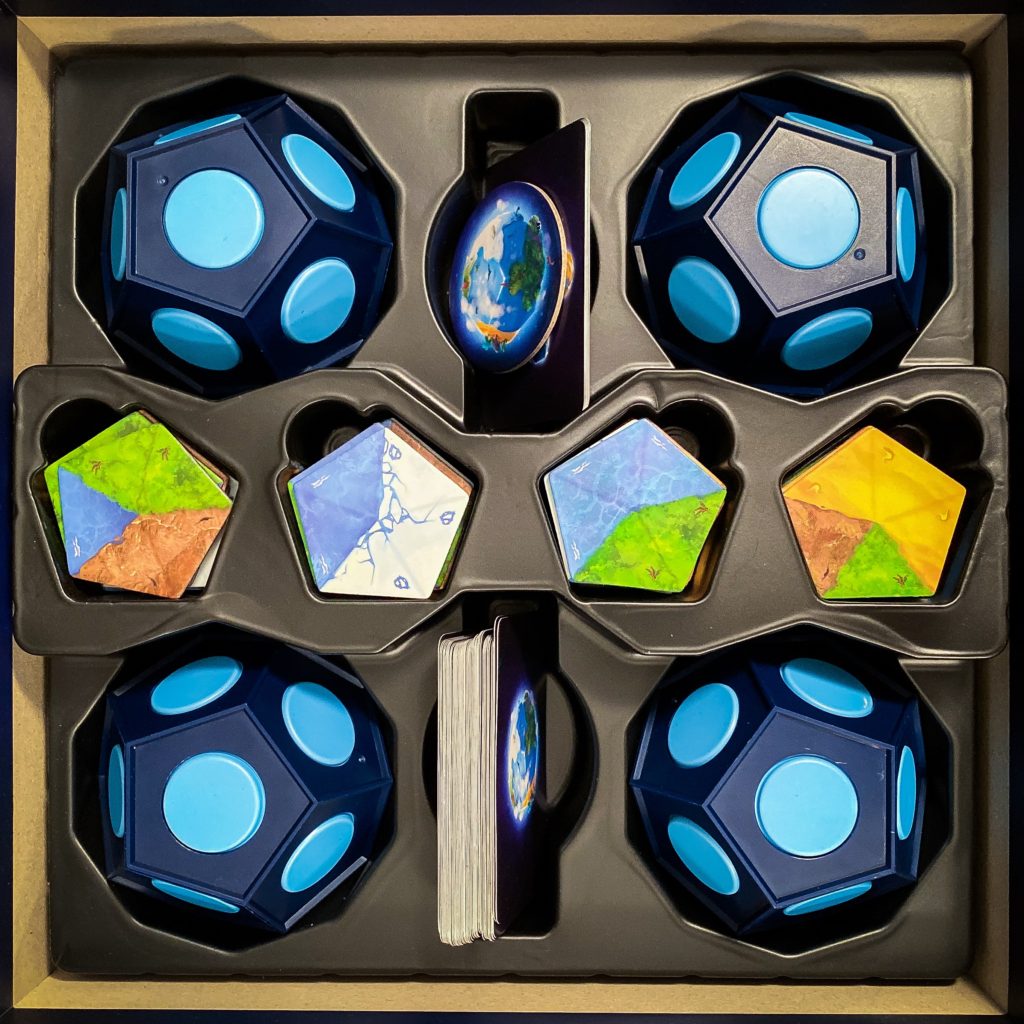
Playing with Kids
Kids are automatically drawn to this game. It hits all the right buttons for them. It’s beautiful, its got animals, and there’s a really cool toy factor in the planet core.
However, the 3D core is a bit trickier to manage than a flat grid on the table would be. There’s a bit of a learning curve not only to how you need to place your tiles, but also how to interpret them, making sure to count continent regions correctly during play and game end. Even some adults might struggle with this at first.
While Planet is simple to play, it is a bit trickier than it looks. Trying to keep all of your habitat areas straight, count regions correctly, and plan for as much of the available animals as possible can be challenging.
While this game is a perfect challenge for our daughter Alice (7.5) it’s a bit much for our Kingdomino loving five year old son Sebastian.
We do recommend removing the Natural Habitat cards from play when playing with younger players. This allows them to just focus on selecting tiles to earn animal cards which really helps ease confusion and frustration.
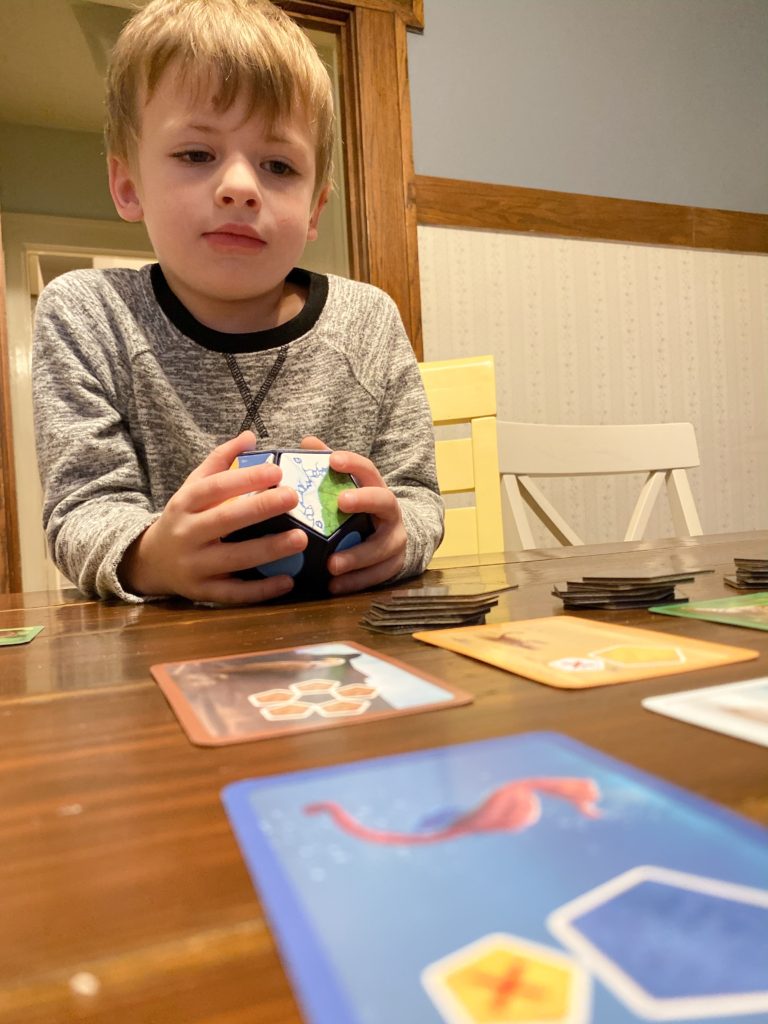
Using Planet in Education
I think Planet could be incorporated relatively well into science lessons.
Planet is all about building environments that could sustain animal life. One thing I loved when looking at the animal cards is just how well the environment conditions worked for each animal.
It makes sense that a penguin would need to live in the arctic region yet still need to be able to access the ocean. Or that the snakes require the most desert regions, or how Owls require a large forrest area that does not connect to the ocean.
This would work very well with a lesson all about the environment and how animals require specific habitats to survive and thrive.
Students could choose which types of habitat they are interested in researching and learning what animals make this type of environment their home and why they are best suited for it.
For instance, if they choose the desert, students can research why the desert is a better home for a snake than it is for a squirrel. What makes the snake better suited to live in that environment? Encourage students to research about how habitats in different parts of the world are home to different wildlife.
While learning about the habitats that animals call home, they can also learn about the types of plants that are found in those environments as well.
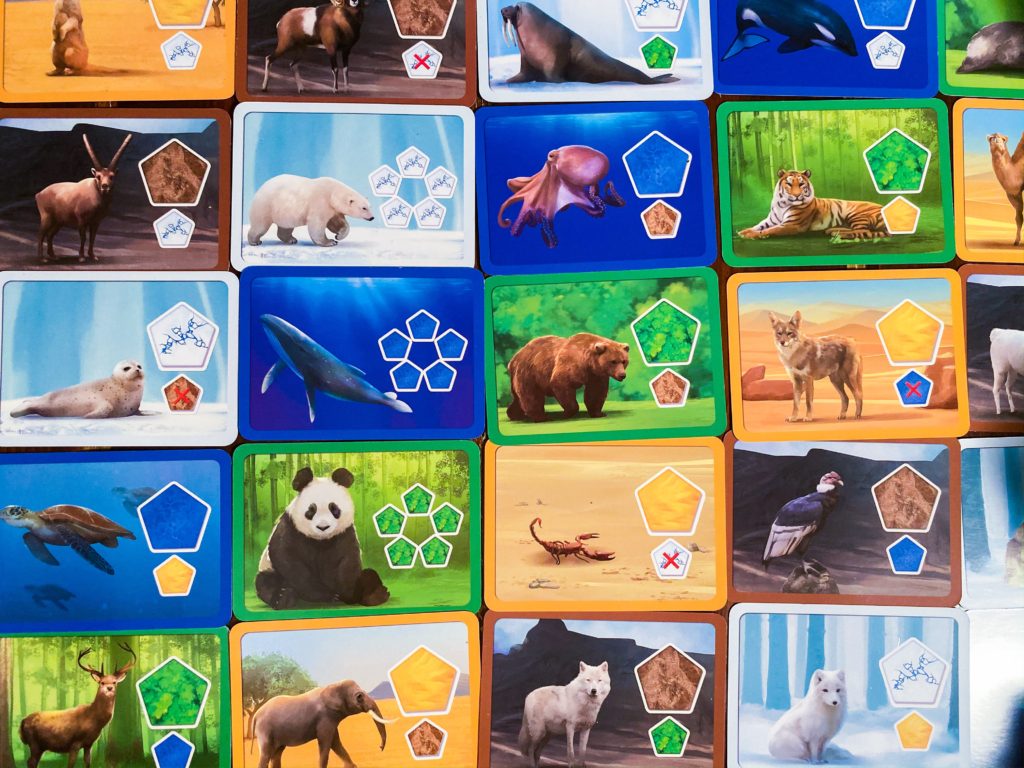
Students can write down what they’ve learned through their research in a journal. Or, if your student(s) are really getting into the lesson, you could work toward students building their own dioramas.
Have them select an animal card from the game to research, learning about the habitat it requires, then work to recreate that environment using a shoebox or even a storage container. This would be a great way to incorporate both written research and the presentation of their findings.
If you are looking for a way to help your kids conduct animal research, I have this free download that I’ve made for our homeschool. There are two types of research sheets, one for younger students in Kindergarten and First Grade, and one for older elementary students.
If you are looking for books your student can use for researching, I highly recommend the DK Smithsonian Visual Encyclopedias. The images are stunning and they are packed full of fascinating information about animals and ocean life. We got these as birthday gifts for our son and they have been so loved we need to buy another set! They are seriously the best!
Animals: A Visual Encyclopedia
Ocean: A Visual Encyclopedia
Summary
Planet is a fantastic game for families and fans of tile placement games.
If you are worried about the gimmicky look of the planet cores, worry not! These planets truly shine as the highlight of the game, adding both a unique tactile experience and a very tricky puzzle for you to work your tiles around.
Even though the game itself appears simple, don’t let that fool you. Planet packs a serious gamer punch as you are constantly evaluating and re-evaluating how you need to strategically build your planet to bring forth the most life.
The simple rules, quick game play, and beautiful design mean that this game will see a lot of table time and makes it a perfect choice to introduce to new players. Planet is a game everyone will want to get their hands on once they see it and offers a highly replayable experience as no two games will ever be exactly alike.
We highly recommend you check out Planet!
A special thank you to Blue Orange Games for sending us a copy of Planet for review. As always our thoughts and opinions are our own.
Game Info:
Title: Planet
2-4 Players Ages 8+
Designer: Urtis Sulinskas
Artist: Sabrina Miramon
Publisher: Blue Orange Games
This post contains affiliate links at no cost to you. To read our full disclosure click here.
If you enjoyed this post, be sure to check out:
Teaching with Games: Cardline Dinosaurs
Storytelling with Fairy Tile
Mountains Review

